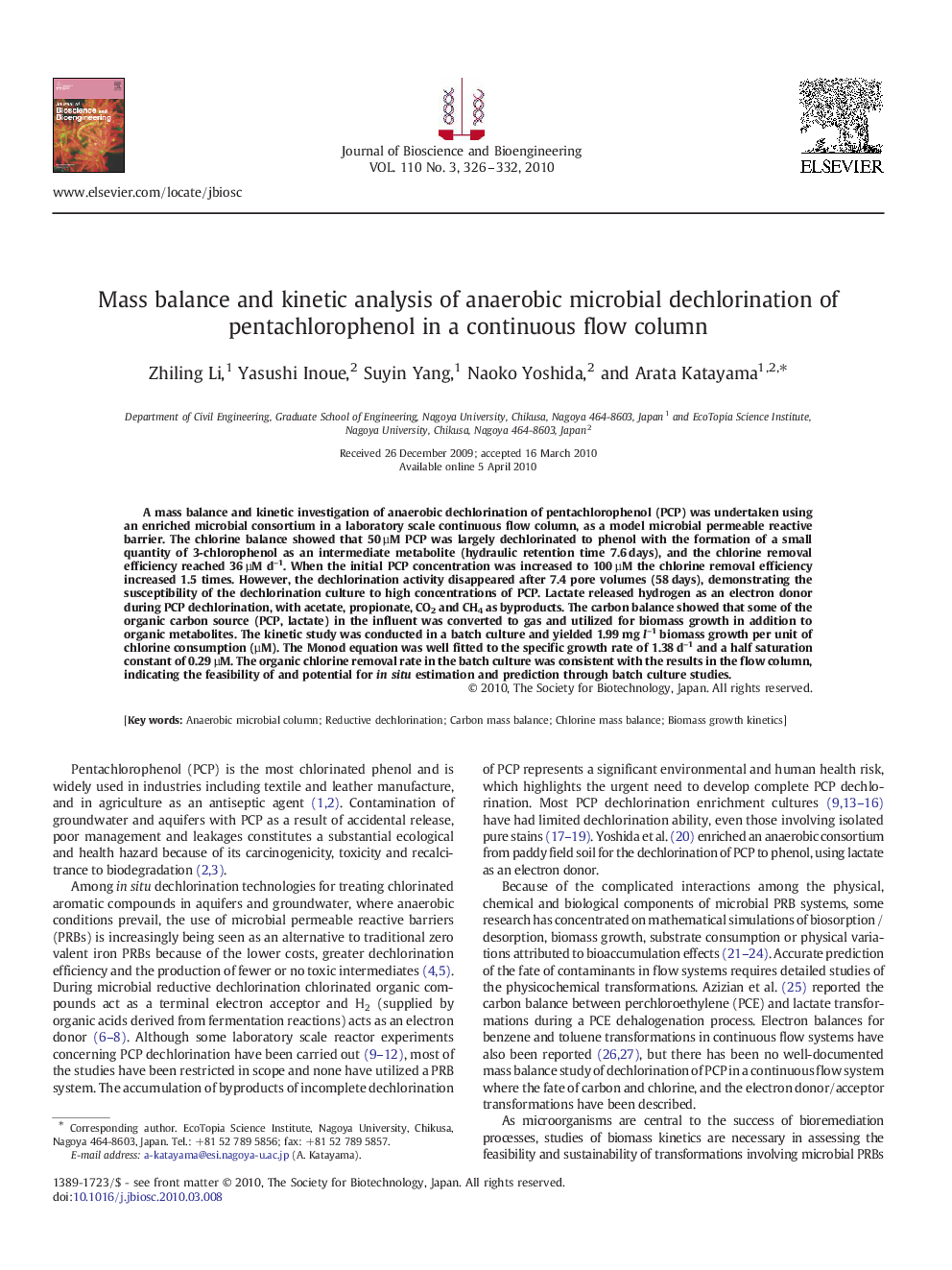| Article ID | Journal | Published Year | Pages | File Type |
|---|---|---|---|---|
| 21100 | Journal of Bioscience and Bioengineering | 2010 | 7 Pages |
A mass balance and kinetic investigation of anaerobic dechlorination of pentachlorophenol (PCP) was undertaken using an enriched microbial consortium in a laboratory scale continuous flow column, as a model microbial permeable reactive barrier. The chlorine balance showed that 50 µM PCP was largely dechlorinated to phenol with the formation of a small quantity of 3-chlorophenol as an intermediate metabolite (hydraulic retention time 7.6 days), and the chlorine removal efficiency reached 36 µM d–1. When the initial PCP concentration was increased to 100 µM the chlorine removal efficiency increased 1.5 times. However, the dechlorination activity disappeared after 7.4 pore volumes (58 days), demonstrating the susceptibility of the dechlorination culture to high concentrations of PCP. Lactate released hydrogen as an electron donor during PCP dechlorination, with acetate, propionate, CO2 and CH4 as byproducts. The carbon balance showed that some of the organic carbon source (PCP, lactate) in the influent was converted to gas and utilized for biomass growth in addition to organic metabolites. The kinetic study was conducted in a batch culture and yielded 1.99 mg l–1 biomass growth per unit of chlorine consumption (µM). The Monod equation was well fitted to the specific growth rate of 1.38 d–1 and a half saturation constant of 0.29 µM. The organic chlorine removal rate in the batch culture was consistent with the results in the flow column, indicating the feasibility of and potential for in situ estimation and prediction through batch culture studies.
